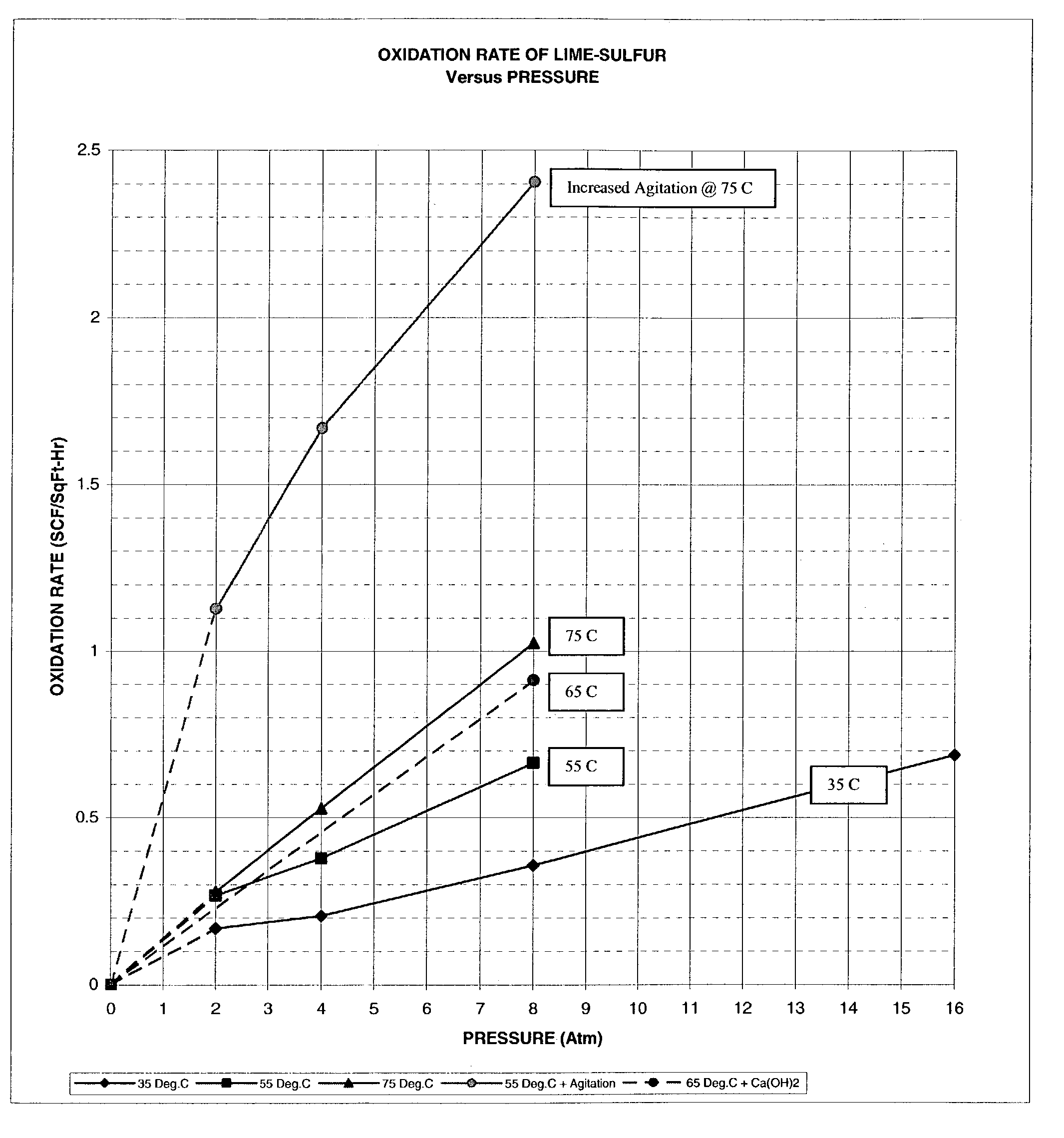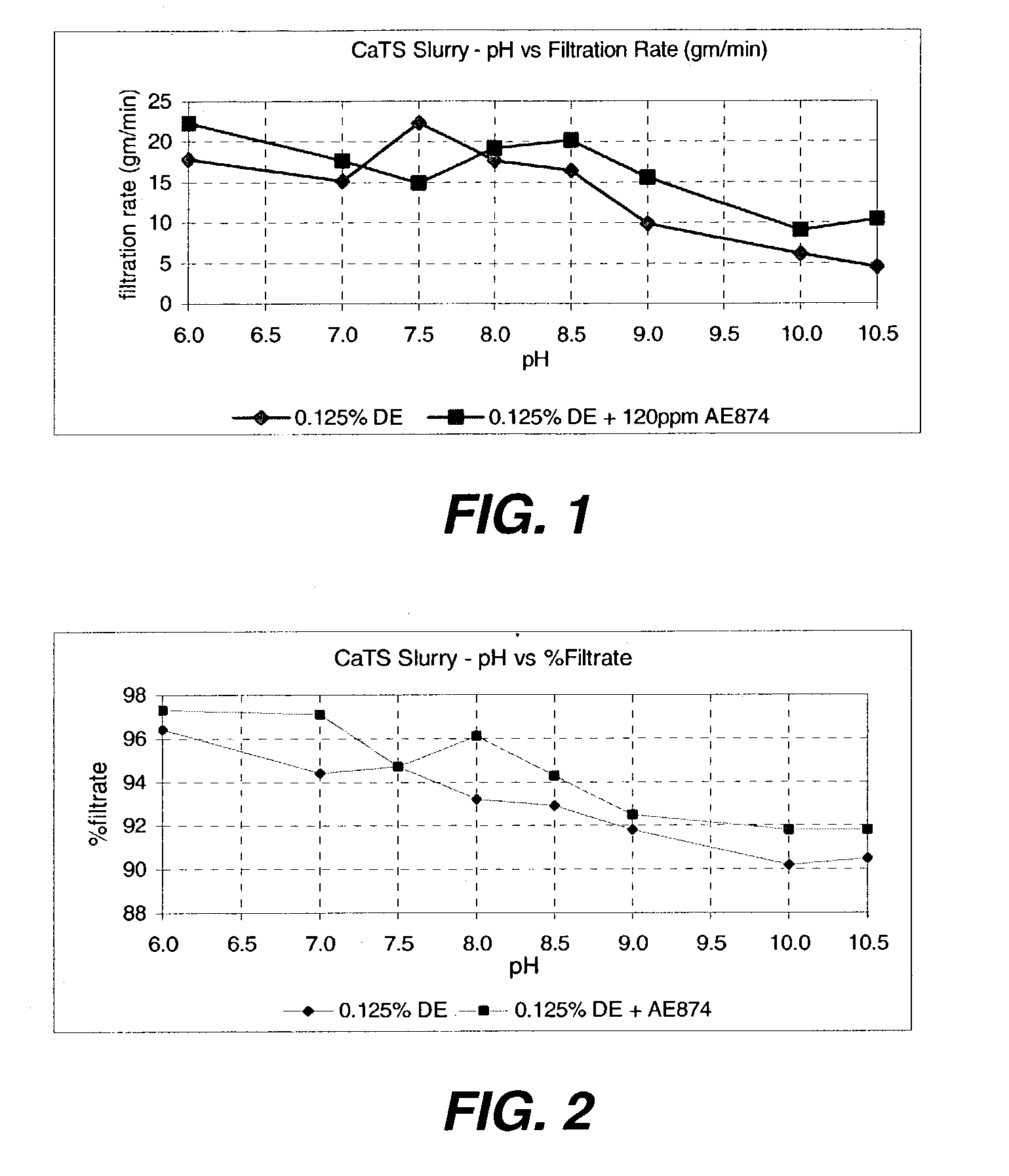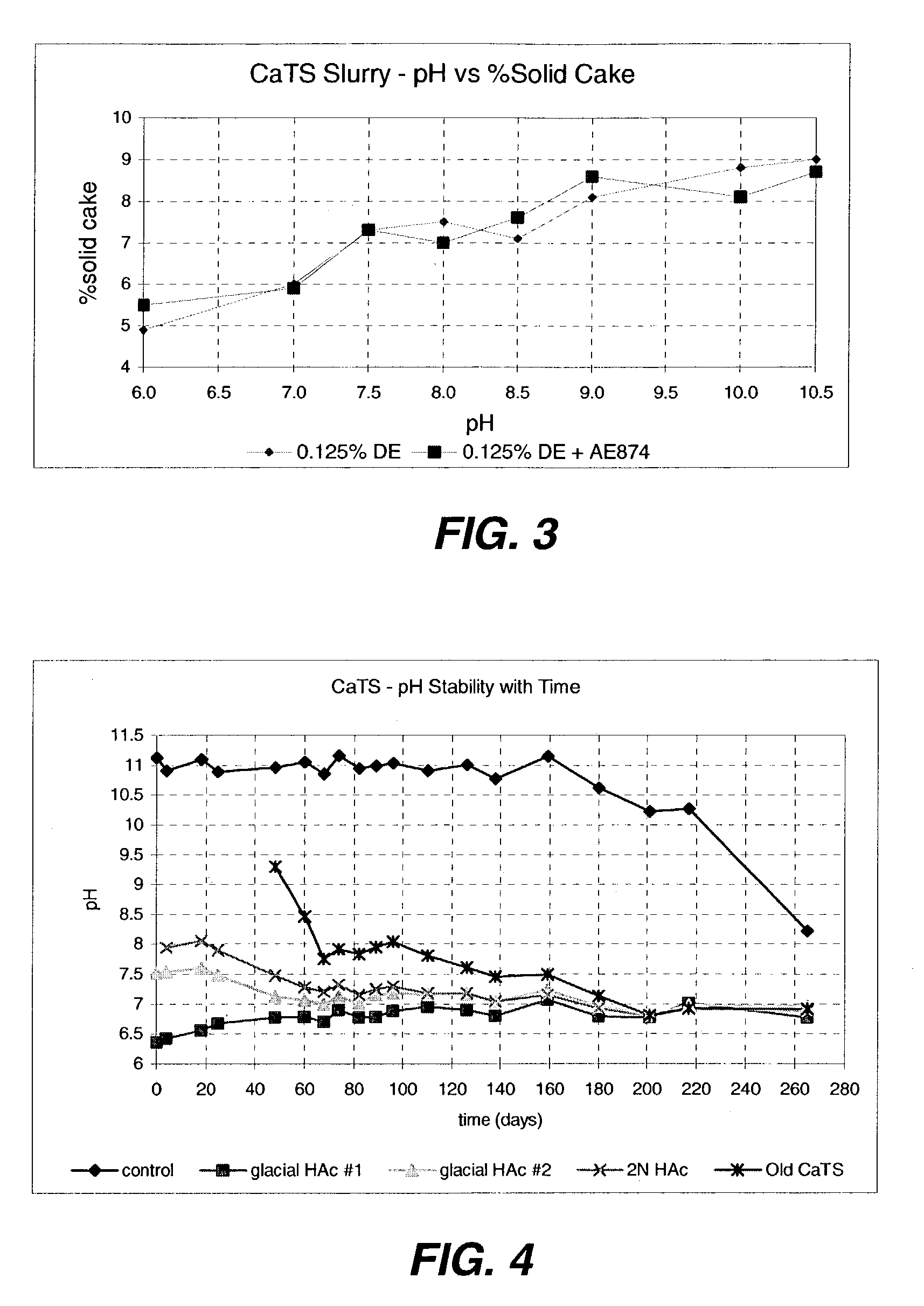Process for preparing calcium thiosulfate solution
a technology of calcium thiosulfate and solution, which is applied in the field of plant nutrient solutions, can solve the problems of ion exchange and salt exchange, high cost of raw materials and equipment, and the inability to decompose calcium hydrosulfide into hydrogen sulfide, etc., and achieve the effect of reducing the oxidation of the product of thiosulfa
- Summary
- Abstract
- Description
- Claims
- Application Information
AI Technical Summary
Benefits of technology
Problems solved by technology
Method used
Image
Examples
example 1
Lime Slaking, Bench Scale
[0080]157 grams of water is placed in a stirred reactor fitted with a thermometer and 21 grams of commercial CaO is charged into the reactor. The exothermic mixture is stirred for 30–40 minutes for complete slaking.
example 2
[0081]24 grams of sulfur is charged into the stirred, slacked slurry prepared in Example 1. The stirred mixture is heated to 90° C. The heating and stirring is continued for about 3 hours until all the sulfur is fully reacted and a lime-sulfur slurry has formed.
example 3
Calcium Thiosulfate Preparation
[0082]The lime-sulfur slurry prepared in Example 2 is transferred to a stirred reactor capable of being pressurized and equipped with an inlet and outlet for air purge and introduction of oxygen, a thermometer, and a cooling system. Moderate stirring is applied to the mixture to provide an even interface of liquid-gas and with no vortex formation. The reactor is purged with oxygen and pressurized to 10–15 psig followed by venting to 0.0 psig. The mixture is heated to 55–75° C. Oxygen is introduced to the reactor to initiate oxidation. Oxidation pressure of the system is maintained at 4–8 atmospheres. Oxidation is continued until oxygen is no longer absorbed, which is apparent by the absence of further pressure drop or heat rise.
PUM
| Property | Measurement | Unit |
|---|---|---|
| temperature | aaaaa | aaaaa |
| temperature | aaaaa | aaaaa |
| pressure | aaaaa | aaaaa |
Abstract
Description
Claims
Application Information
 Login to View More
Login to View More - R&D
- Intellectual Property
- Life Sciences
- Materials
- Tech Scout
- Unparalleled Data Quality
- Higher Quality Content
- 60% Fewer Hallucinations
Browse by: Latest US Patents, China's latest patents, Technical Efficacy Thesaurus, Application Domain, Technology Topic, Popular Technical Reports.
© 2025 PatSnap. All rights reserved.Legal|Privacy policy|Modern Slavery Act Transparency Statement|Sitemap|About US| Contact US: help@patsnap.com



